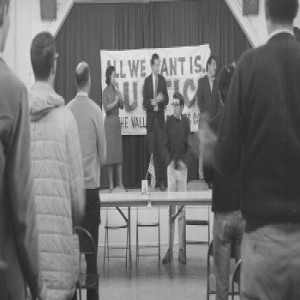
On this day in labor history, the year was 1967.
That was the day the United Farm Workers’ Sons of Zapata joined with the Confederation of Mexican Workers in establishing an international picket line across the Rio Grande Valley.
A push to organize farm workers at six major growers began the year before, in the spring of 1966. Wages in Starr County ranged from 40-85 cents an hour.
Farm workers began their strike in June 1966 for wage increases and union recognition.
But growers would rather see their crops rot than recognize the union.
They did grant wage increases but immediately ran to the courts for injunctions.
One district judge outlawed all picketing, while police instructed county workers to spray strikers with insecticide.
That August, workers voted to organize with the United Farm Workers and began a pilgrimage march to the state capitol to popularize their cause.
15,000 workers and their supporters reached Austin on Labor Day to demand their right to organize.
They returned to Starr County to continue their strike.
The growers turned to Mexican commuters holding green cards to break the strike.
The UFW began picketing at the Roma and Rio Grande City bridges and were often successful in turning back green card workers.
By May 1967, melon harvest had begun.
After months of negotiations with the CTM, picket lines went up on both sides of the international bridges.
The picketing was 100% successful for two days.
But the Mexican government and Starr County Sheriff’s department soon intervened to break up the picket lines.
Texas Rangers were brought in to arrest and brutalize strikers.
The strike was broken but organizing continued throughout the region.
Picketing across borders was itself an important act of international solidarity.
More Episodes
 2023-12-09
2023-12-09
 2023-12-07
2023-12-07
 2023-12-05
2023-12-05
 2023-12-05
2023-12-05
 2023-12-05
2023-12-05
 2023-12-02
2023-12-02
 2023-12-01
2023-12-01
 2023-11-28
2023-11-28
 2023-11-27
2023-11-27
 2023-11-26
2023-11-26
 2023-11-24
2023-11-24
 2023-11-23
2023-11-23
 2023-11-22
2023-11-22
 2023-11-22
2023-11-22
Create your
podcast in
minutes
- Full-featured podcast site
- Unlimited storage and bandwidth
- Comprehensive podcast stats
- Distribute to Apple Podcasts, Spotify, and more
- Make money with your podcast
It is Free
- Privacy Policy
- Cookie Policy
- Terms of Use
- Consent Preferences
- Copyright © 2015-2024 Podbean.com




